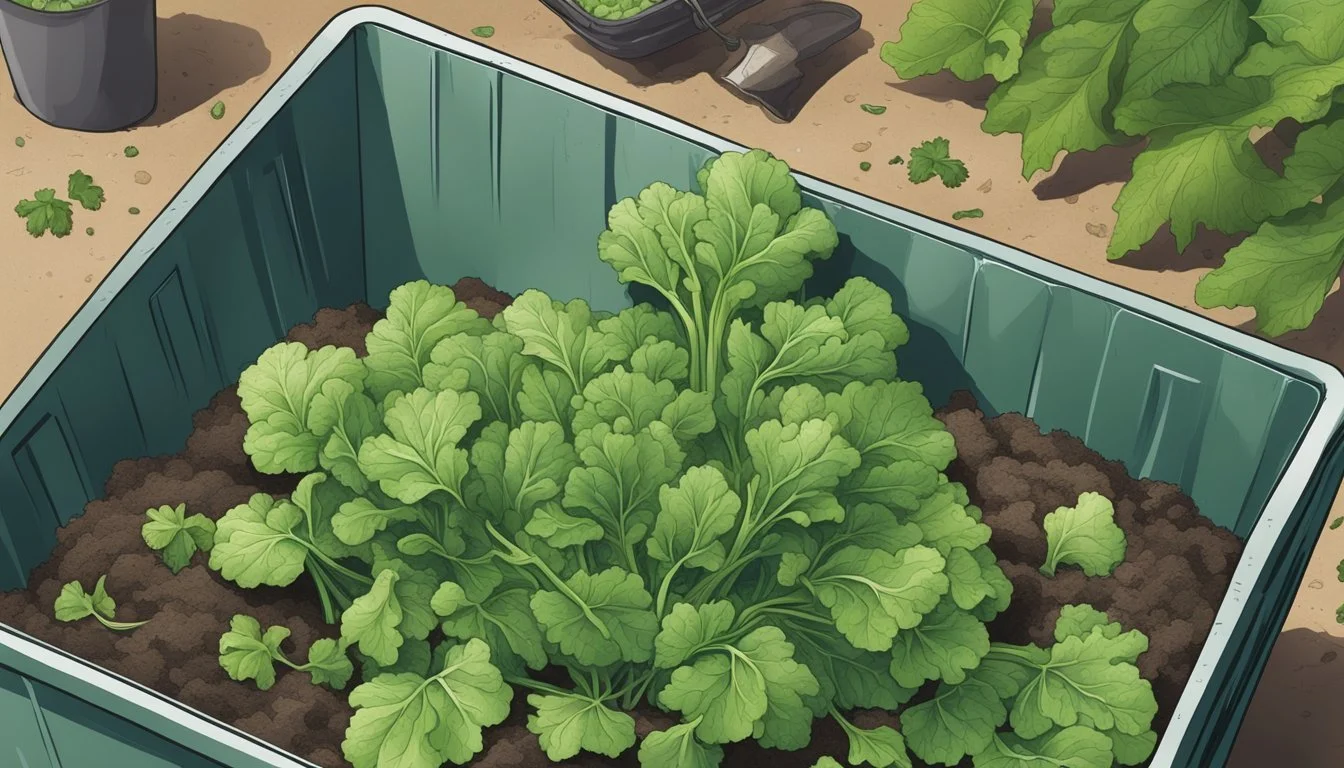Can You Compost Turnip Greens?
A Guide to Eco-Friendly Disposal
Composting is a sustainable method of recycling kitchen scraps and yard waste into valuable soil amendment, and turnip greens are indeed suitable for this process. As a green material, they provide nitrogen, an essential component of the composting process, which helps to heat up the compost pile and break down organic matter efficiently. Turnip greens are particularly advantageous due to their high nitrogen content, which acts as a catalyst when balanced with carbon-rich browns in the compost.
When adding turnip greens to a compost heap, it is important to chop them into smaller pieces to expedite decomposition. The high moisture content and soft texture of turnip greens allow them to break down rapidly, contributing to a rich, fertile compost. However, to maintain a balanced compost pile, it is critical to alternate layers of green materials like turnip greens with brown materials, such as dry leaves, straw, or cardboard, to ensure the correct carbon-to-nitrogen ratio for optimal composting.
Incorporating turnip greens into compost is not only a means of reducing kitchen waste but also enhances the nutrient profile of the compost, providing a host of benefits when eventually added to garden soil. This compost can help improve soil structure, water retention, and nutrient availability, leading to healthier plant growth and a more productive garden.
Composting Turnip Greens
Composting turnip greens adds valuable nutrients back into the soil, making it a beneficial practice for gardeners. Turnip greens are an excellent green material for compost due to their nutrient-rich composition.
Benefits of Composting Turnip Greens
Composting turnip greens enriches the compost pile with essential elements such as nitrogen, which is a critical component in the composting process. Decomposed turnip greens become a part of the organic matter in compost, enhancing the overall structure of the soil when used as a soil amendment. This practice contributes to soil health by:
Increasing microbial activity: Microorganisms break down organic matter, releasing nutrients slowly back into the soil.
Improving soil structure: Adding compost to soil helps to aerate it and improves its water retention capabilities.
Basic Composting Methods
To compost turnip greens effectively, one must balance them with brown compost materials, like dry leaves, to maintain an optimal carbon-to-nitrogen ratio. A general guide is to use a 30:1 ratio of browns to greens. A simple method involves:
Layering: Alternate layers of greens (turnip greens) and browns in the compost bin.
Turning: Regularly turn the pile to aerate it and speed up the composting process.
Monitoring: Keep the compost moist but not wet, and ensure it's well-aerated to prevent odor and facilitate decomposition.
Potential Issues and Solutions
Turnip greens, like other green materials, can sometimes cause issues in the composting process if not managed properly. Here are common issues and their solutions:
Odor Problems: If the compost pile starts to smell, it could be due to excess moisture or lack of aeration. Regularly turning the pile and adding more brown materials can solve this issue.
Pest Attraction: If not properly covered or mixed with brown material, turnip greens can attract pests. Keeping the pile balanced and enclosed can mitigate this.
Composting turnip greens is uncomplicated and contributes significantly to a nutrient-rich compost, thereby promoting sustainable soil health.



